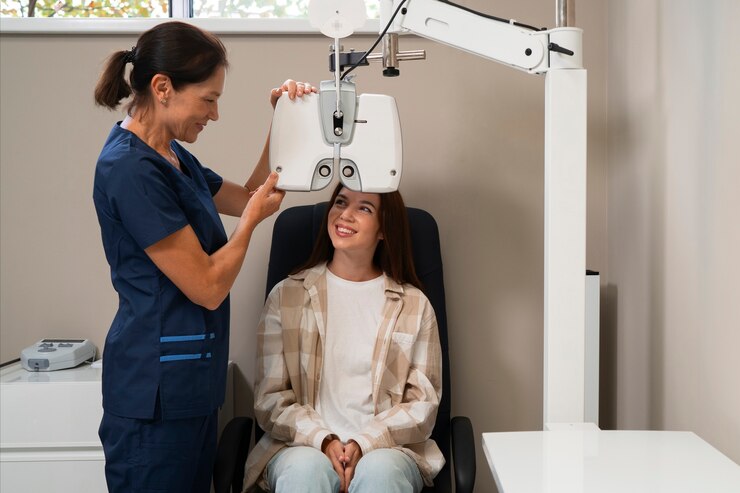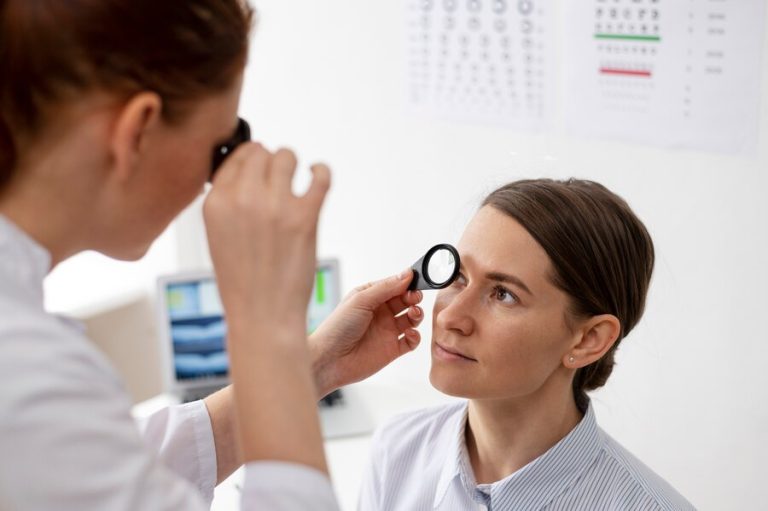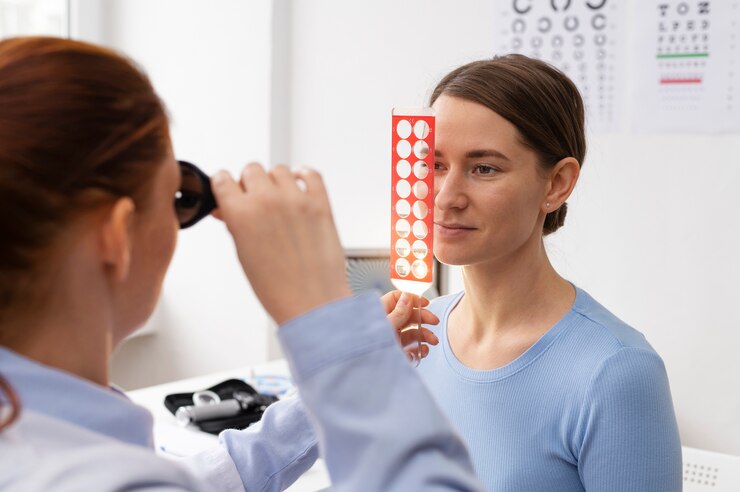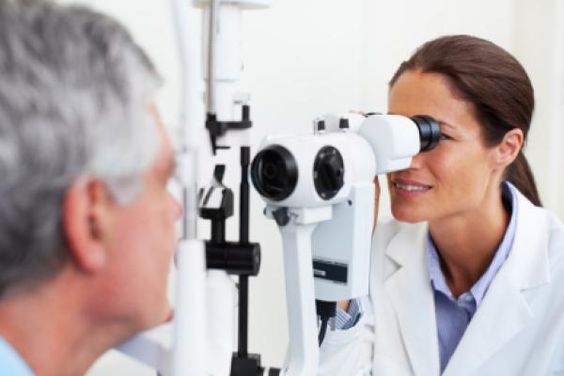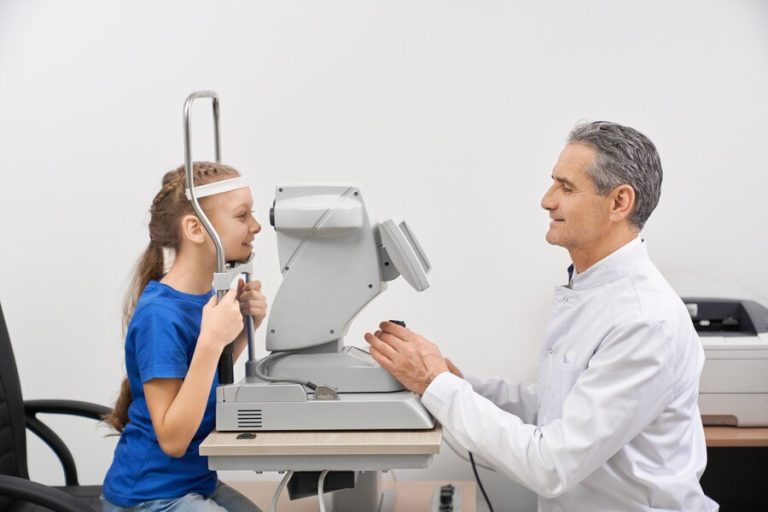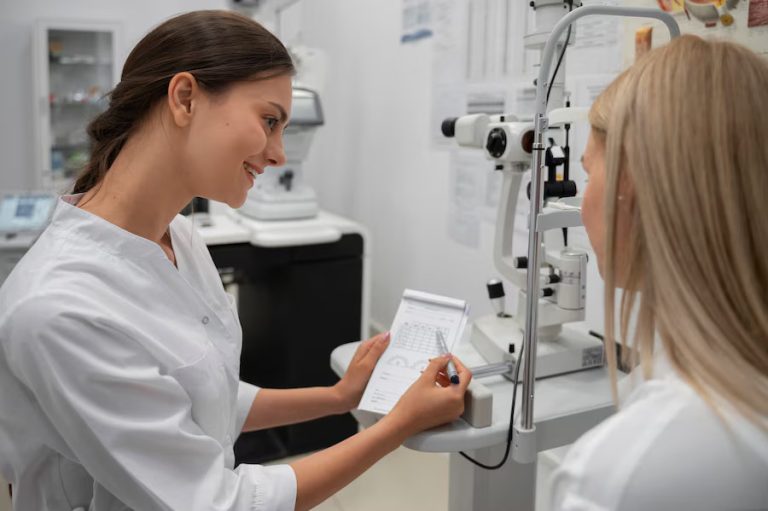Introduction To Complete Eye Examination: Importance And Overview
The human eye is a remarkable organ responsible for one of our most precious senses: vision. Maintaining good eye health is essential for overall well-being and quality of life. A comprehensive eye examination is a vital component of preventive healthcare, enabling early detection and management of various eye conditions and vision disorders. In this article, we will explore the importance and components of a complete eye examination, highlighting its role in preserving eye health and optimizing visual function.
Importance of Eye Examinations:
Regular eye examinations are crucial for individuals of all ages, from infants to seniors. While many people associate eye exams with obtaining glasses or contact lenses, their significance extends far beyond vision correction. Comprehensive eye exams serve several important purposes:
Early Detection of Eye Diseases: Eye exams can detect signs of common eye diseases such as glaucoma, cataracts, macular degeneration, diabetic retinopathy, and retinal detachment before they cause significant vision loss. Early detection allows for prompt intervention and treatment, which can help preserve vision and prevent complications.
Monitoring Eye Health: For individuals with existing eye conditions or systemic diseases that affect the eyes (such as diabetes or hypertension), regular eye exams are essential for monitoring changes in eye health and assessing the effectiveness of treatment. Close monitoring can help prevent disease progression and optimize management strategies.
Assessment of Visual Function: A comprehensive eye examination evaluates various aspects of visual function, including visual acuity, refractive error, binocular vision, color vision, and peripheral vision. Assessing visual function helps identify vision problems that may impact daily activities, school performance, work productivity, and overall quality of life.
Prescription of Corrective Lenses: Eye exams determine the appropriate prescription for glasses or contact lenses to correct refractive errors such as myopia (nearsightedness), hyperopia (farsightedness), astigmatism, and presbyopia (age-related decline in near vision). Accurate prescriptions ensure optimal visual clarity and comfort.
Detection of Systemic Diseases: The eyes can provide valuable insights into a person’s overall health. Changes in the blood vessels, optic nerve, or retina may indicate systemic conditions such as diabetes, hypertension, autoimmune diseases, or neurological disorders. Detecting these signs early through eye exams can prompt further evaluation and management of underlying health issues.
Components of a Complete Eye Examination:
A comprehensive eye examination typically consists of several key components, which may vary depending on the patient’s age, medical history, and presenting symptoms. However, the following elements are commonly included:
Patient History: The eye doctor begins by gathering information about the patient’s medical history, including any existing eye conditions, systemic health problems, medications, family history of eye diseases, and lifestyle factors (such as occupation and hobbies).
Visual Acuity Testing: Visual acuity is assessed using an eye chart (e.g., Snellen chart or LogMAR chart) to measure the clarity of distance vision. The patient reads letters or symbols of varying sizes from a standardized distance (usually 20 feet or 6 meters).
Refraction: Refraction determines the patient’s refractive error and prescription for glasses or contact lenses. The eye doctor uses a phoropter or autorefractor to measure the eye’s ability to focus light accurately onto the retina, correcting any refractive errors such as nearsightedness, farsightedness, or astigmatism.
Ocular Motility and Alignment: Eye movements and alignment are evaluated to assess binocular vision, eye coordination, and the presence of strabismus (eye misalignment). The patient may be asked to follow a moving target or perform specific eye movements.
Assessment of Pupillary Responses: Pupil size, symmetry, and reactivity to light are examined to assess the integrity of the pupillary reflexes and neurological function.
Evaluation of Anterior Segment: The front portion of the eye, including the cornea, conjunctiva, iris, and lens, is examined using a slit lamp biomicroscope. This allows the eye doctor to assess for abnormalities such as corneal abrasions, cataracts, dry eye syndrome, or inflammation.
Measurement of Intraocular Pressure (IOP): Intraocular pressure is measured using tonometry to screen for glaucoma, a condition characterized by elevated eye pressure that can damage the optic nerve and lead to vision loss if left untreated.
Dilated Fundus Examination: The eye doctor examines the internal structures of the eye, including the retina, optic nerve, and macula, using a special magnifying lens and ophthalmoscope. Pupil dilation with eye drops allows for a more comprehensive view of the retina and enables the detection of retinal diseases such as diabetic retinopathy, macular degeneration, or retinal detachment.
Additional Testing: Depending on the patient’s age, risk factors, or presenting symptoms, additional tests may be performed, such as visual field testing, color vision testing, optical coherence tomography (OCT), or fundus photography.
Conclusion
A complete eye examination is a fundamental aspect of preventive healthcare, providing valuable insights into eye health, visual function, and overall well-being. By detecting and managing eye diseases early, eye exams can help preserve vision, prevent complications, and improve quality of life. Individuals of all ages should undergo regular eye examinations as recommended by their eye care professionals to ensure optimal eye health and visual acuity. Remember, healthy eyesight is a precious gift worth protecting through proactive eye care and regular screenings.

